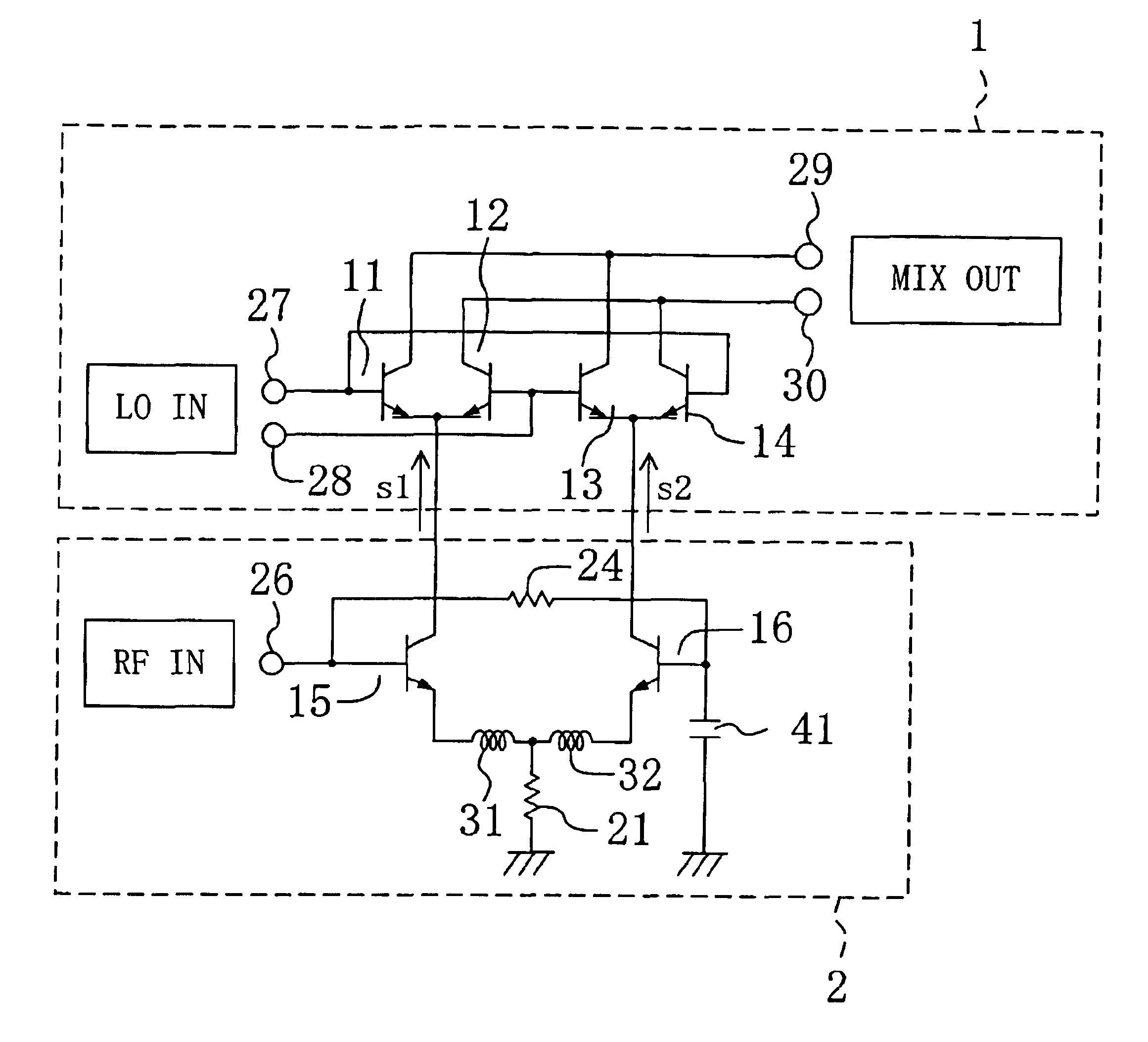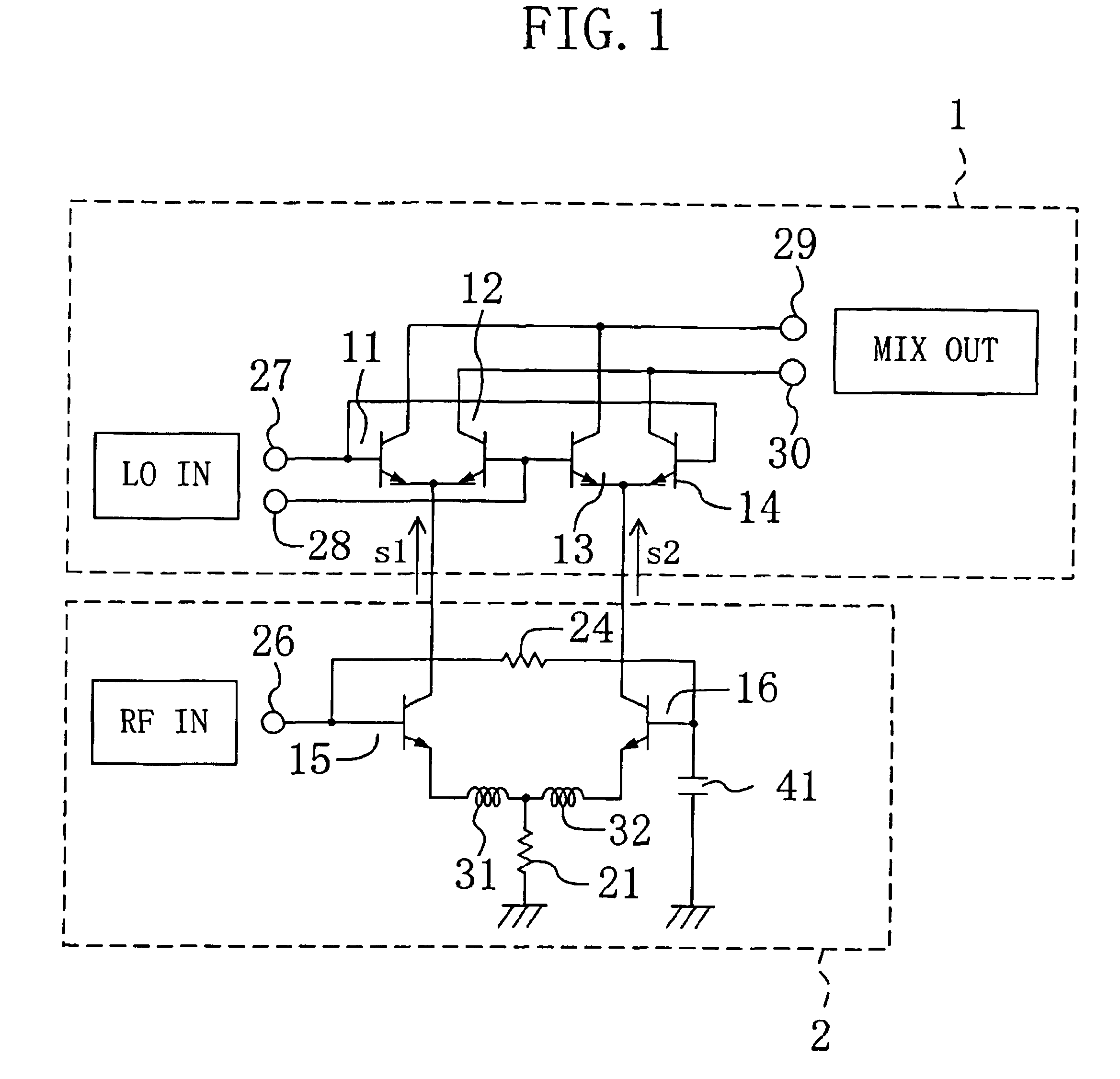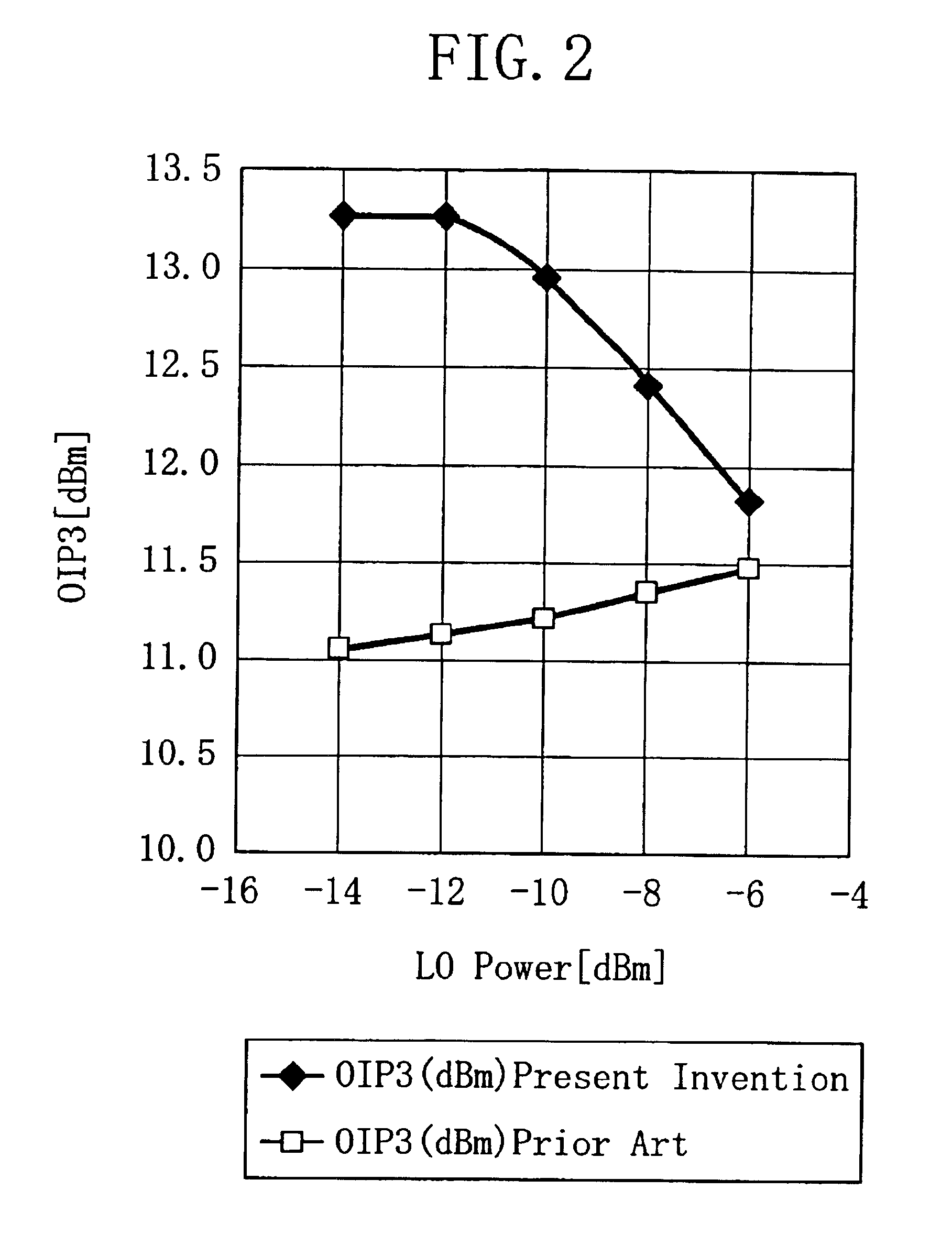Mixer circuit and differential amplifier circuit
a technology of mixer circuit and amplifier circuit, which is applied in the field of differential amplifier circuit and mixer circuit, can solve the problems of reducing the performance of communication equipment with the structure of the conventional rf mixer circuit, requiring multi-stage amplifiers, and amplification of extremely weak signals using transmitted/received rf frequencies in equipment such as terminal devices or wireless base stations used for information communication, so as to reduce power consumption and distortion in outputs.
- Summary
- Abstract
- Description
- Claims
- Application Information
AI Technical Summary
Benefits of technology
Problems solved by technology
Method used
Image
Examples
embodiment 1
FIG. 1 is a circuit diagram showing a structure of an RF mixer circuit according to a first embodiment of the present invention.
As shown in the drawing, the RF mixer circuit according to the present embodiment is composed of a differential amplifier circuit 2 and a double-balanced mixer circuit (DBM circuit) 1 connected to the differential amplifier circuit 2.
When an RF signal is inputted to the differential amplifier circuit 2 and an LO signal and an inverted LO signal opposite in phase to the LO signal are inputted to the DBM circuit 1 in the RF mixer circuit according to the present embodiment, these signals are mixed with each other in the DBM circuit 1 so that an IF signal as a mixed signal of the RF signal and the LO signals is outputted in the same manner as in the conventional RF mixer circuit.
In the RF mixer circuit according to the present embodiment, harmonic components contained in the outputs of the differential amplifier circuit 2 have been reduced compared with those ...
embodiment 2
FIG. 4 is a circuit diagram showing a structure of an RF mixer circuit according to a second embodiment of the present embodiment.
As shown in the drawing, the RF mixer circuit according to the present embodiment is different from the RF mixer circuit according to the first embodiment in that a third inductor 25 is provided in place of the first resistor 24 (see FIG. 1). As for the other circuit components, they are the same as those used in the first embodiment.
Briefly, the RF mixer circuit according to the present embodiment is composed of a DBM circuit 1 having the same structure as that of each of the conventional and first embodiments and of a differential amplifier circuit 2.
The differential amplifier circuit 2 has: first and second bipolar transistors 15 and 16 having respective bases to which RF signals having a 180° phase shift therebetween are inputted; first and second inductors 31 and 32 connected to the respective emitters of the first and second bipolar transistors 15 a...
embodiment 3
As a third embodiment of the present invention, a differential amplifier circuit which outputs an amplified signal in response to an inverted input signal opposite in phase to an input signal will be described.
FIG. 5 is a circuit diagram showing a structure of the differential amplifier circuit according to the present embodiment. As shown in the drawing, the differential amplifier circuit according to the present embodiment is identical to the differential amplifier circuit 2 (see FIG. 1) in the RF mixer circuit according to the first embodiment. The RF signal input port 26 according to the first embodiment is replaced with an input port 53 in the present embodiment. In addition, output ports 50 and 51 for outputting signals are provided.
The differential amplifier circuit according to the present embodiment has: first and second bipolar transistors 15 and 16 having respective bases connected to each other; and the input port 53 connected to each of the respective bases of the first...
PUM
 Login to View More
Login to View More Abstract
Description
Claims
Application Information
 Login to View More
Login to View More - R&D
- Intellectual Property
- Life Sciences
- Materials
- Tech Scout
- Unparalleled Data Quality
- Higher Quality Content
- 60% Fewer Hallucinations
Browse by: Latest US Patents, China's latest patents, Technical Efficacy Thesaurus, Application Domain, Technology Topic, Popular Technical Reports.
© 2025 PatSnap. All rights reserved.Legal|Privacy policy|Modern Slavery Act Transparency Statement|Sitemap|About US| Contact US: help@patsnap.com



